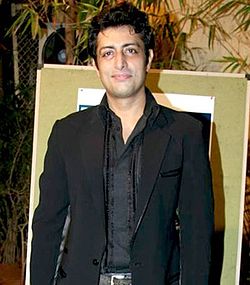

In a tumultuous time in India's history, a group of brave individuals embarks on a journey to fight for their dignity and the right to exist. Their struggles highlight the universal quest for freedom and respect, showing how hope and courage can triumph over adversity.
September 5
2025
Release Date
Hindi
Language
20 minutes
3 hours
Running Time
Cast


Darshan Kumaar


Pallavi Joshi


Anupam Kher


Mithun Chakraborty


Saswata Chatterjee


Priyanshu Chatterjee


Saurav Das


Dibyendu Bhattacharya


Puneet Issar


Mohan Kapur


Madalsa Sharma








Namashi Chakraborthy








Rumi Jaffery








Rajesh Khera








Simratt Kaur Randhawa








Digvijay Purohit








Richard Keep








Emily R. Acland
3.5
Average Rating
The above-mentioned average rating is based on the derived ratings of multiple review platforms
OH Review


The Bengal Files - Movie Review
Plot
The Bengal Files follows the unsettling journey of CBI officer Shiva Pandit (played by Darshan Kumaar) as he investigates the mysterious disappearance of journalist Gita Mondal in the politically charged backdrop of Bengal. The film dives headfirst into 1946's tumultuous history, revisiting events like Direct Action Day and the Noakhali killings, acts of violence that marred the region. Through Shiva's quest for answers, viewers are drawn into a dark chapter of Indian history often overlooked in popular culture. The film intercuts between past and present, illustrating how the traumas of the past still echo in contemporary issues.
The film opens with fiery discussions involving historical figures like Lord Mountbatten, Jawaharlal Nehru, and Muhammad Ali Jinnah, debating the Partition. As Shiva digs deeper into Gita's case, suspicion falls on local MLA Sardar Hosseini (Saswata Chatterjee), but as he navigates through red tape and societal pressures, he soon finds himself embroiled in explosive political and communal tensions. Shiva's investigation leads him to Bharati Banerjee (Pallavi Joshi), an elderly woman whose fading memories serve as a haunting connection to the past. Her recollections propel both the film and the viewers back to the horrors of the 1940s, effectively illustrating the rawness of the violence endured by countless individuals during the period.
Where the narrative becomes truly gripping is through the scenes depicting brutality—characters endure unimaginable horrors during the communal riots. Agnihotri does not shy away from portraying the gruesome aspects of this dark history, utilizing these graphic representations to evoke a strong emotional response in the audience. Events spiral into chaos and bloodshed as communal divides reveal the deepest horrors humanity can inflict on itself, challenging viewers to confront historical injustices that reverberate into the present day.
Overall, while the storytelling framework is ambitious, the relentless exploration of violence and trauma leaves viewers feeling saturated by the intensity of the experience. The compelling narrative intertwines a personal drama with a broader socio-political commentary, resulting in an emotionally charged storyline that keeps audiences uncomfortably glued to their seats. The film articulates its themes boldly, but in doing so, it risks overwhelming its audience with sheer brutality.
Acting
The performances in The Bengal Files are notably intense, with Darshan Kumaar as Shiva Pandit leading the charge. He embodies the character's moral complexity incredibly well, expressing the internal conflicts that arise when grappling with the harsh realities of his investigation. His quiet strength juxtaposed with moments of intense vulnerability creates an engaging lead that mirrors the film's overarching themes of struggle and resilience.
Pallavi Joshi portrays Bharati Banerjee with an emotional depth that transports viewers into her character's personal history. Even as a fictional embodiment of collective trauma, her portrayal resonates on a deeper level, reflecting the weight of history unfolding within her narrative. Her character acts as a conduit for past horrors, giving the contemporary investigation a layered emotional foundation. The chemistry between her and Darshan is palpable, enhancing the narrative complexities as they navigate the shadows of history together.
Supporting performances are equally compelling. Anupam Kher's portrayal of Mahatma Gandhi, while brief, is impactful, presenting a striking interpretation of a leader grappling with his ideals. Saswata Chatterjee as Sardar Hosseini delivers a strong performance, his character embodying the contemporary political tensions that are steeped in historical grievances. Eklavya Sood deserves mention too, for his powerful depiction of Amar, the Sikh soldier whose fate encapsulates the horrific realities of communal conflict.
However, the intensity of the performances occasionally veers into theatricality, perhaps in an effort to match the film's heavy themes and graphic sequences. Some actors resort to exaggerated expressions, which can pull audiences out of the moment despite their obvious commitment to portraying the suffering and emotional weight of their characters. While it aims to evoke empathy, the over-the-top delivery can at times dilute the impact of the otherwise poignant themes being explored.
Overall, The Bengal Files boasts solid performances from its cast, skillfully bringing their characters' plights to life. Despite some lapses into melodrama, the actors manage to create a deeply human experience that invites audiences to reflect on the characters' struggles and the historical implications of their narratives, ultimately grounding the film's ambitious storyline in emotional realities.
Cinematography
The cinematography in The Bengal Files plays a pivotal role in immersing the audience within its intense narrative. With sweeping shots of Bengal's landscapes juxtaposed against brutal riot sequences, the visual storytelling creates a stark contrast that amplifies the film's themes of beauty and horror. The cinematographer adeptly crafts a visual language that captures both the natural allure of the region as well as the raw, costly ravages of its past.
The film's visual palette leans towards dark and muted tones, establishing an atmosphere of foreboding that matches the weight of the story being told. Scenes detailing communal violence utilize tight framing and jarring cuts, fostering an unsettling sense of chaos. The use of lighting is similarly impactful; periods of darkness are punctuated with sudden bursts of light, echoing the film’s volatility.
Through strategically designed shots, the cinematography subtly conveys the emotional toll of each character's ordeal. Close-ups of characters’ faces effectively capture their trauma and resolve. Pivotal moments are often framed to emphasize the contrasts between protagonists and antagonists, allowing audiences to delve deeper into this historical narrative while feeding their unease about its violent backdrop.
Additionally, the cinematographer exhibits a daring approach, showcasing violent scenes with unwavering intensity. While this could be perceived as gratuitous, it aligns with the film's intention to confront harsh truths, compelling viewers to grapple with the archival scars that litter the landscape. Yet, the overwhelming portrayal of violence may push some audience members to the edge of their comfort zones.
Overall, The Bengal Files excels in its cinematographic execution, creating a visual experience that compliments the narrative while providing a poignant exploration of historical events. Each shot intricately weaves together the threads of beauty, suffering, and truth, compelling audiences to consider the broader implications of violence in human history and the need for dialogue in confronting these harsh realities.
Direction
Directed by Vivek Agnihotri, The Bengal Files delves headfirst into one of India's most contentious historical narratives with an unwavering commitment to showcasing the brutality of the past. Agnihotri's approach is unrepentant, often casting Mahatma Gandhi and other historical figures in controversial lights as he navigates the murky waters of communal violence and political strife. His storytelling is characterized by a remarkable ambition, attempting to engage with themes of national identity, loss, and the deep-seated issues of communal division that plague the country even today.
Agnihotri's direction certainly earns accolades for its audacity, as he tackles a subject often left untouched in mainstream cinema. He is relentless in his portrayal of violence, undoubtedly aiming to provoke an emotional response from the audience and spark intense discussions surrounding the socio-political climate. The film's structure oscillates between past and present, with the director skilfully interweaving these timelines to create a haunting narrative flow.
However, the heavy-handedness with which he conveys his message is a double-edged sword. While the rapid succession of violent scenes is designed to leave audiences in a state of discomfort, the sheer volume of brutality can detract from the film's deeper moral dilemmas. Instead of elevating the discourse, it risks overshadowing Agnihotri's points with shock value rather than nuanced storytelling. The character development sometimes feels sacrificed under the weight of the film's ambition, as moments that could add emotional depth are overshadowed by the relentless pace of violence.
The director's vision, while bold, sometimes lacks the deft touch required for sensitive narratives. At times, Agnihotri's decisions elicit more eye-rolls than reflections, leaving audiences grappling with questions of necessity regarding the graphic depictions instead of engaging with the broader themes. As the film inches toward its lengthy runtime, certain segments feel overstretched, making viewers wonder whether fewer, more impactful scenes could have served the message better.
Despite its flaws, Agnihotri's commitment to illuminating the historical context remains commendable. He showcases an underreported side of India's tumultuous past, prompting discussions that inspire a necessary confrontation with uncomfortable truths. While the direction may stumble at times, its ambitious vision cannot be denied, and the film ultimately serves as a powerful reminder of the weight of history and its persistent relevance.
Conclusion
The Bengal Files emerges as a formidable piece of cinema that confronts audiences with an uncomfortable reckoning of historical violence and communal strife in Eastern India. With a bold narrative and striking visuals, it challenges viewers to engage with the darkest chapters of the past while illustrating the far-reaching consequences that echo into modern society. Though it is marred by an overwhelming focus on graphic violence and an extensive runtime, the film still manages to shed light on an important historical narrative that requires attention in the context of Indian cinema.
As a cinematic venture, Agnihotri's film undeniably captures the attention with its audacity, unwavering focus on trauma, and historical context. However, the discussions that arise from this film may leave some audiences frustrated, particularly those who seek a more balanced examination of historical events rather than a spectacle of violence. It raises vital questions about how the past continues to shape identities and politics today, making it a worthwhile, though challenging, viewing experience.
The performances deliver compelling depictions of complex characters navigating society's constraints and the atavistic impulses of hate and fear. Despite its shortcomings, The Bengal Files strives to elicit reflection and candid dialogues and urges viewers to acknowledge and confront the narratives often hidden from contemporary discourse. It's a harsh reminder of the cyclical nature of violence and the need for understanding amidst the echoes of history, making it a potentially polarizing, yet necessary addition to the dialogue surrounding communal violence in India.
Share this review
The Great Reviews
Times of India
NDTV
India TV
More like this
Dhurandhar
In Dhurandhar, in "Dhurandhar," a gripping tale unfolds as a group of Indian heroes confronts the underworld's darkest forces. Inspired by real events, the f...
Zootopia 2
In Zootopia 2, brave rabbit cop Judy Hopps and clever fox Nick Wilde reunite to solve their toughest case yet. As they navigate twists and turns in a mysteri...


